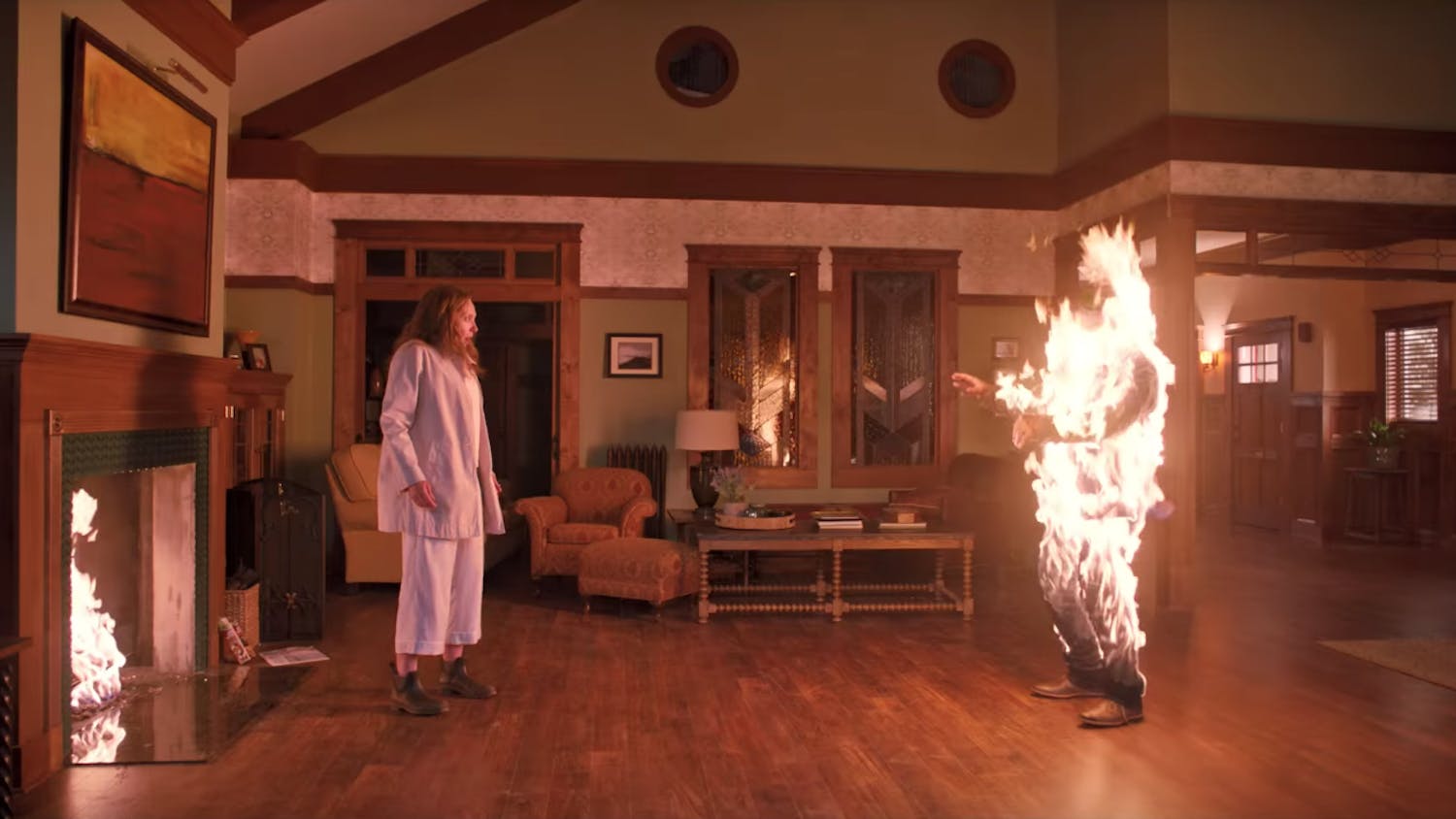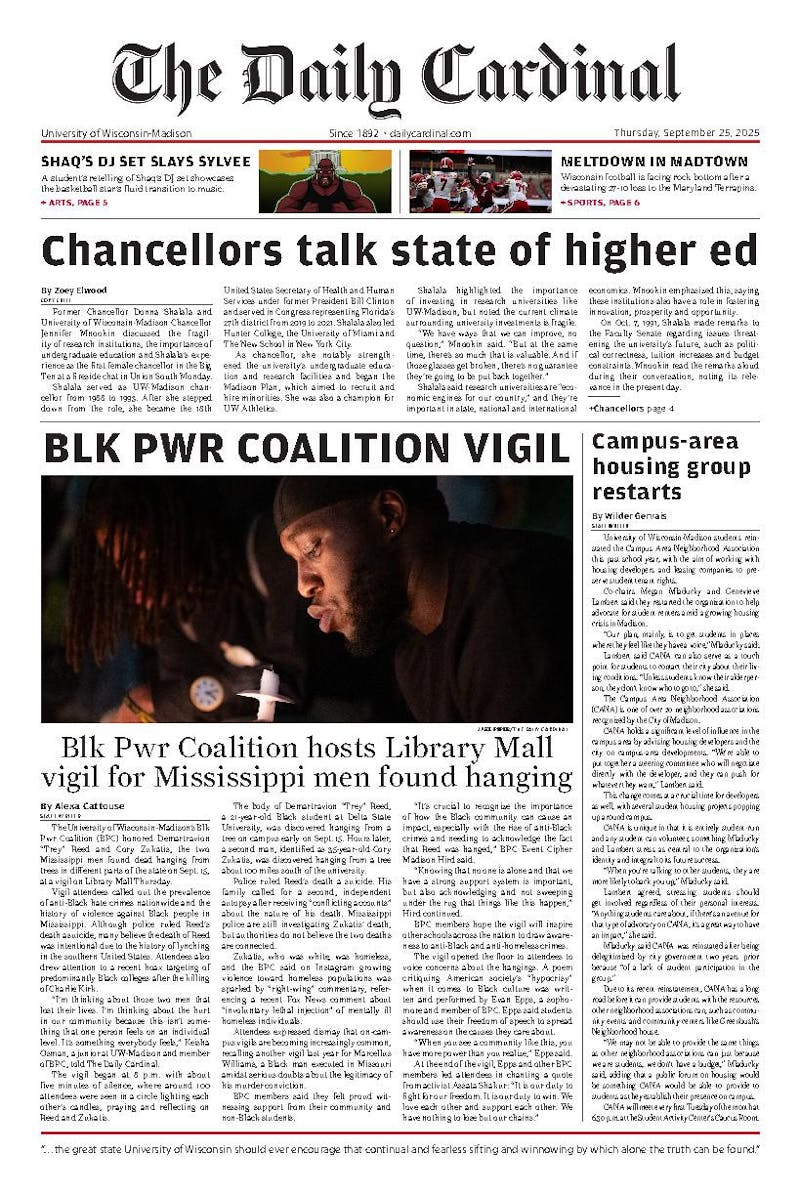Let’s talk about Nick Cave for a moment.
He’s a hideous man, standing 6’2” with a wild, unkempt mane of tangled hair and a terrible gargoyle-ish face. He writes about murder and deceit, about the wrath of God and the vices of man and about the countless women, good or bad, who waltz in and out of his life. He’s equal parts monster and crooner behind a microphone, as given to singing as he is to shrieking and howling, and you don’t ever, ever want to hear him play guitar.
And he’s my absolute favorite songwriter of all time.
Cave got big way back in the day with the Birthday Party, a rambunctious bunch of post-punkers in the ’80s who wrote grizzly songs about grizzly things (big single “Nick the Stripper” had a music video which prominently featured an emaciated Cave dancing around a nightmare carnival with “HELL” scrawled across his chest. It’s also one of James Murphy and John Darnielle’s favorite songs).
They had a short-lived but influential tenure (fact: J Mascis of Dinosaur Jr. will bring up the time he saw the Birthday Party an average of three times per interview), and shortly after their breakup Cave used his momentum, gathering up some new musicians to form his main squeeze, the aptly named Nick Cave and the Bad Seeds.
The Bad Seeds started off as an amendment to the Birthday Party’s base manifesto—putrid, gothic anthems about the dredges of society and the depths of the world.
The group’s early single “Tupelo” opens with a boom of thunder and the throb of rain before a menacing bassline sneaks in and Cave begins to snarl about the stillborn twin of Elvis Presley, equated to the second coming of Christ and the apocalypse. It’s seven minutes long and heavy as heavy comes. Another early song, “The Carny,” is an eight-minute, Tom Waits-esque carnival jaunt about a circus troupe who push on through the stormy night after their titular Carny fails to return one evening.
These early songs had an air of pure evil about them, and even when Cave’s façade cracked a bit and a ray of goodness peaked through, it was still with its fair share of discomfort.
“Sad Waters,” the opening track off of Your Funeral, My Trial, is absolutely gorgeous and sincere—until you look a little closer, and the song turns out to be about a Lewis Carroll/Humbert Humbert-esque predator whose love has drowned. But therein lies Cave’s greatest strength as a songwriter; he can spin even the most vile of subjects into something captivating, even beautiful.
His biggest break came with 1996’s Murder Ballads, still the Bad Seeds’ best-selling album to date. It’s a 10-song collection of folk-tale inspired tunes, overflowing with black humor and buckets of blood.
The single “Where the Wild Roses Grow” won Nick and his motley crew international fame in the shape of a lovelorn duet with Kylie Minogue. Except, you know, in the end Cave smashes Minogue’s character’s face in with a rock, claiming “All beauty must die.” Well, you win some you lose some.
Murder Ballads also featured “Stagger Lee,” an updated folk standard and possibly the most badass song ever, and “O’Malley’s Bar,” a 14-minute, dark-comedy epic about a quick-tongued mass murderer. It’s a monstrous album and the apex of Cave’s obsession with the bleak.
Shortly after Murder Ballads, Cave got dumped by longtime lover girl PJ Harvey (yes, that PJ Harvey) and released the obligatory breakup album, The Boatman’s Call.
Gone was the howling, raucous Cave of old; The Boatman’s Call was a somber, piano-driven showcase of melancholy and remorse. Virtually all of the songs feature Cave on keys, accompanied by a select few instruments, which render it a tremendous departure from the Seeds’ previous, noisy compositions.
Follow up album No More Shall We Part, long delayed by Cave’s alcohol and heroin addiction, continued the trend, and, for all their critical acclaim, both albums never sat too well with me.
After another weak showing (the mostly useless Nocturama, redeemed only by the scalding 14 minute closer, “Babe I’m On Fire”), the Bad Seeds returned again in 2004, and, 20 years into their career, put out their best album to date.
Abattoir Blues/ The Lyre of Orpheus was a massive, bluesy, gospel-tinged double album of alternative rock, much separated from the gothic terror of Cave’s early days but captivating nonetheless.
Its second single, “There She Goes, My Beautiful World,” remains to this day one of my favorite songs, and “Breathless” is still one of the most affecting and sincere love songs I’ve ever heard.
The Seed’s latest album, Dig!!! Lazarus, Dig!!!, wasn’t as epic a followup as expected, but it was still a rollicking bit of dirty Americana, proving that, even as he creeps closer to 60, Nick Cave remains one of the most vital and valuable songwriters we have today.





